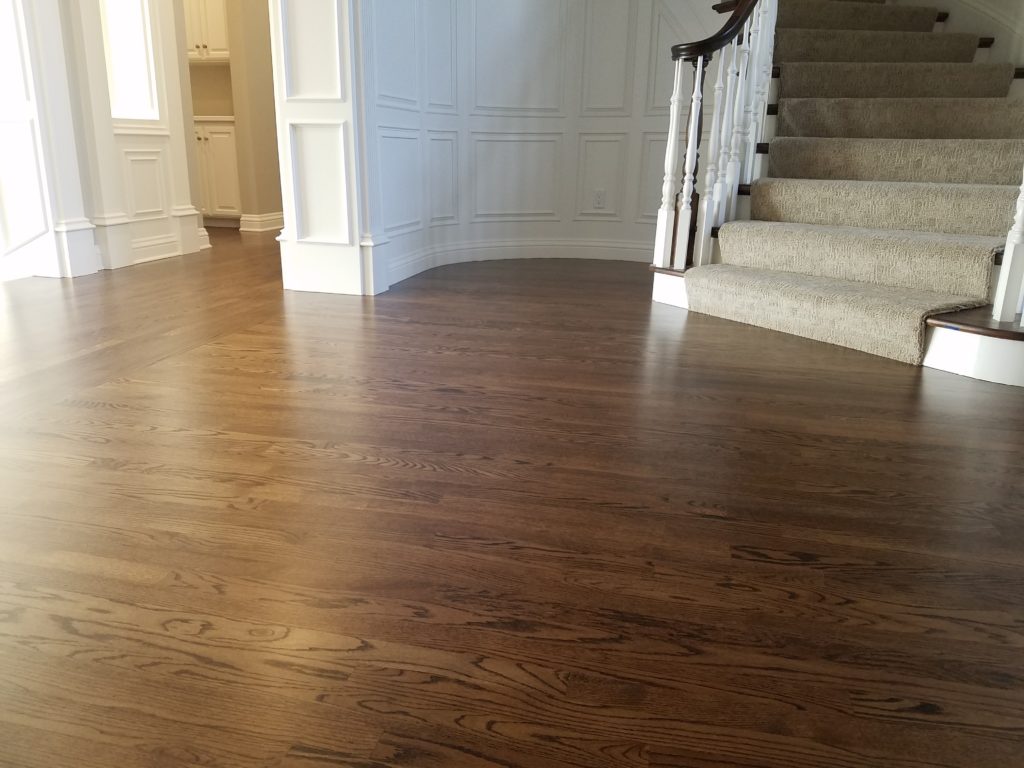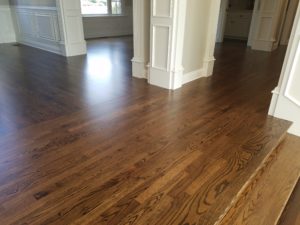We use several kinds of sanding machines:

- Belt sanders – the abrasive is a belt which spins around a drum in one direction
- Single disc sanders – the abrasive is round and spins in one direction
- Multi disc sanders – three discs which spin in multiple directions
- Orbital sanders – single disc random orbit type
The one thing that is common to all these machines is this: they all create very fine dust quickly. Unless there is a vacuum there to contain the dust, it will get in the air immediately. The motor parts and fans inside the sanders help blow the dust off the floor and up into the air. Once in the air, the dust will travel several feet and often far enough into other rooms. It takes several hours for fine wood dust to settle on flat surfaces like shelves and floor coverings.
A big part of our business is fixing other people’s sanding jobs. We have seen dust on walls, in bedrooms all over the home owners stereo and tv. We have seen dust completely covering a furnace air return and piles of it inside floor heat registers. Dust must be contained for a good sanding job.
 Wood dust is not something our bodies can process. Wood dust is one of the more common causes of health problems especially lung related conditions.
Wood dust is not something our bodies can process. Wood dust is one of the more common causes of health problems especially lung related conditions.

